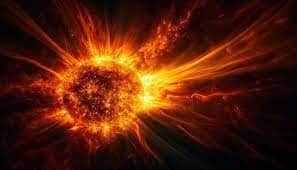Key points:
- It is known that there are large numbers of regions of weak magnetic field on the sun which vary with time.
- These can be studied using magnetograms and Ca-K line images of the sun as there is strong correlation between the magnetic field and the Ca-K line intensity of the region on the sun.
- The magneto-grams are available for a short period and the characteristics of the instrument are changing with time.
- Ca-K line images are available for a long period at Kodaikanal observatory (KO), for more than 100 years with no change in the optics of the instrument.
- Similarly, other observatories in the world, such as Mount Wilson Observatory (MWO) have had this type of data for about 70 years.
- Using the data obtained at Kodaikanal observatory the scientists have shown that correlation between derived plage area (bright region in the sun’s chromosphere) from the Ca-K images and sunspot number is excellent, even on a daily basis, over a period of about 100 years for the first time.
- Significance:
- This type of accurate analysis of the historic time series of Ca-K images can be useful for reliable and accurate investigation of variations on the sun and the effect of this on the climatic condition of the earth.
- It helps in understanding the dynamics of the sun, solar cycle variations, dynamo processes in the convection zone and resulting long term climatic variations on the earth.
What is Magnetogram?
- It is an image taken by an instrument which can detect the strength and location of the magnetic fields on the Sun.
- In a magnetogram, gray areas indicate that there is no magnetic field, while black and white areas indicate regions where there is a strong magnetic field.
Q1) What is sunspot?
A sunspot is a temporary, relatively dark area on the Sun’s surface caused by intense magnetic activity. These spots are cooler and less luminous than the surrounding solar surface due to the strong magnetic fields inhibiting the convective flow of hot gases from below. Sunspots are a common feature of the Sun’s photosphere.
Source: New methodology developed can give accurate analysis of the historic time series of images of Sun
Last updated on January, 2026
→ Check out the latest UPSC Syllabus 2026 here.
→ Join Vajiram & Ravi’s Interview Guidance Programme for expert help to crack your final UPSC stage.
→ UPSC Mains Result 2025 is now out.
→ UPSC Notification 2026 is scheduled to be released on January 14, 2026.
→ UPSC Calendar 2026 is released on 15th May, 2025.
→ UPSC Prelims 2026 will be conducted on 24th May, 2026 & UPSC Mains 2026 will be conducted on 21st August 2026.
→ The UPSC Selection Process is of 3 stages-Prelims, Mains and Interview.
→ UPSC Result 2024 is released with latest UPSC Marksheet 2024. Check Now!
→ UPSC Toppers List 2024 is released now. Shakti Dubey is UPSC AIR 1 2024 Topper.
→ Also check Best IAS Coaching in Delhi

















